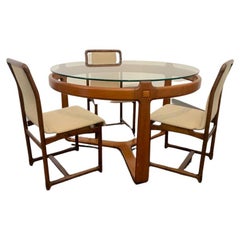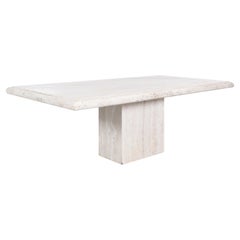Italian Dining Room Tables
1970s Mid-Century Modern Vintage Italian Dining Room Tables
Travertine
1970s Vintage Italian Dining Room Tables
Steel
1970s Mid-Century Modern Vintage Italian Dining Room Tables
Travertine
1970s Hollywood Regency Vintage Italian Dining Room Tables
Brass
1970s Vintage Italian Dining Room Tables
Marble
1970s Mid-Century Modern Vintage Italian Dining Room Tables
Travertine
1970s Space Age Vintage Italian Dining Room Tables
Metal, Steel, Stainless Steel
1970s Mid-Century Modern Vintage Italian Dining Room Tables
Granite
1970s Mid-Century Modern Vintage Italian Dining Room Tables
Travertine, Stainless Steel
1970s Post-Modern Vintage Italian Dining Room Tables
Marble
1970s Mid-Century Modern Vintage Italian Dining Room Tables
Chrome
1970s Post-Modern Vintage Italian Dining Room Tables
Marble, Steel
1970s Mid-Century Modern Vintage Italian Dining Room Tables
Beech
1970s Space Age Vintage Italian Dining Room Tables
Steel
1970s Mid-Century Modern Vintage Italian Dining Room Tables
Walnut, Leather, Plastic
1970s Mid-Century Modern Vintage Italian Dining Room Tables
Iron
1970s Post-Modern Vintage Italian Dining Room Tables
Marble, Brass
1970s Mid-Century Modern Vintage Italian Dining Room Tables
Walnut
1970s Vintage Italian Dining Room Tables
Travertine
1970s Mid-Century Modern Vintage Italian Dining Room Tables
Burl
1970s Space Age Vintage Italian Dining Room Tables
Plastic, Wood
1970s Mid-Century Modern Vintage Italian Dining Room Tables
Walnut
1970s Mid-Century Modern Vintage Italian Dining Room Tables
Travertine
1970s Modern Vintage Italian Dining Room Tables
Metal
1970s Mid-Century Modern Vintage Italian Dining Room Tables
Walnut
1970s Mid-Century Modern Vintage Italian Dining Room Tables
Teak
1970s Vintage Italian Dining Room Tables
Glass, Wood
1970s Mid-Century Modern Vintage Italian Dining Room Tables
Marble, Chrome
1970s Mid-Century Modern Vintage Italian Dining Room Tables
Walnut
1970s Mid-Century Modern Vintage Italian Dining Room Tables
Metal
1970s Modern Vintage Italian Dining Room Tables
Glass, Wood, Lacquer
1970s Modern Vintage Italian Dining Room Tables
Brass, Steel, Chrome
1970s Mid-Century Modern Vintage Italian Dining Room Tables
Granite
1970s Mid-Century Modern Vintage Italian Dining Room Tables
Marble
1970s Vintage Italian Dining Room Tables
Wood
1970s Modern Vintage Italian Dining Room Tables
Chrome
1970s Modern Vintage Italian Dining Room Tables
Chrome
1970s Mid-Century Modern Vintage Italian Dining Room Tables
Wood
1970s Mid-Century Modern Vintage Italian Dining Room Tables
Travertine
1970s Mid-Century Modern Vintage Italian Dining Room Tables
Chrome
1970s Mid-Century Modern Vintage Italian Dining Room Tables
Chrome
1970s Mid-Century Modern Vintage Italian Dining Room Tables
Carrara Marble
1970s Mid-Century Modern Vintage Italian Dining Room Tables
Travertine
1970s Mid-Century Modern Vintage Italian Dining Room Tables
Wood, Oak
1970s Mid-Century Modern Vintage Italian Dining Room Tables
Wood
1970s Mid-Century Modern Vintage Italian Dining Room Tables
Marble, Stainless Steel
1970s Mid-Century Modern Vintage Italian Dining Room Tables
Brass, Stainless Steel
1970s Vintage Italian Dining Room Tables
Steel
1970s Hollywood Regency Vintage Italian Dining Room Tables
Glass
1970s Mid-Century Modern Vintage Italian Dining Room Tables
Glass
1970s Mid-Century Modern Vintage Italian Dining Room Tables
Marble
1970s Mid-Century Modern Vintage Italian Dining Room Tables
Wood
1970s Modern Vintage Italian Dining Room Tables
Stainless Steel, Iron
1970s Mid-Century Modern Vintage Italian Dining Room Tables
Travertine
1970s Modern Vintage Italian Dining Room Tables
Brass, Chrome
1970s Post-Modern Vintage Italian Dining Room Tables
Stone
1970s Hollywood Regency Vintage Italian Dining Room Tables
Brass, Chrome
1970s Vintage Italian Dining Room Tables
Wood
Read More
The Ultimate Guide to Types of Tables for the Home
Whether you’re just moving in or ready to give your home a makeover, our guide will give you pointers on tables that are fitting for every room, nook and hallway.
35 Wondrous Outdoor Dining Spaces
Eating meals alfresco is one of the great pleasures of warm weather, and a beautifully appointed space only heightens the experience. Get inspired by these delectable dining areas as you think about creating your own outdoor oasis.





